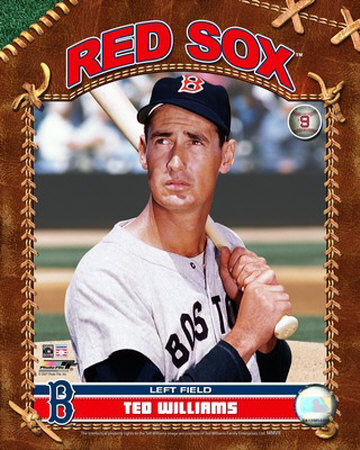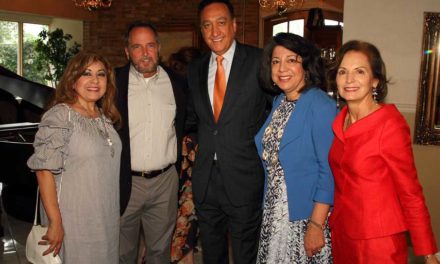My paternal grandfather was an umpire in the Mexican League and an avid baseball fan. I grew up in the Barrio del Azteca during the 1940s and 1950s, the first oldest, working-class neighborhood in Laredo, Texas. The Apaches were our hometown team, and I knew many of the players’ names, but I can only remember Ismael “El Oso” Montalvo. People called him “El Oso” because he had hair all over his body; he had to shave every day around his wrists, around his neck, and around his chest, to appear presentable. They said that when he walked barefooted, he never left a footprint. My grandfather would take me to the games on Saturday afternoon to watch them play at the old Washington Park on San Bernardo Avenue, which was demolished in 1962 in order to construct the Laredo Civic Center. When I saw “El Oso” play, he was a first baseman, not knowing at the time that our paths would cross years later. I understand from my grandfather that when he was younger, he was a very good pitcher.
In 1997, Alan M. Klein, a cultural anthropologist, wrote Baseball on the Border: A Tale of Two Laredos, and the book is dedicated to the memory of Ismael Montalvo (1913-1996). Dr. Klein interviewed Mr. Montalvo in 1993 and in 1994. There is an interesting photo of him with the 1935 La Junta team. He was 22 years old! I knew that Mr. Montalvo was from San Benito, Texas because he had told me when he hired me to work after school as a bartender at the American Legion Post 59 on Zaragoza Street and right next to our house. We lived at the corner of Zaragoza and Santa Ursula. I was a junior at St. Augustine High School, but I appeared much older. According to the book, he was 18 years old when he dropped out of school and went to Linares, Mexico to pitch for their team for about two months. Then, in the same year, he played with the Mexico City Aztecs, the number one semi-pro team in Mexico. The following year, in 1932, he played in San Antonio with the Mexican Nationals before moving to Laredo the next year. Of the six pitchers that year, Mr. Montalvo had the best record at 13 wins, 2 losses, and no ties. He also led the team with three shutouts. And both Fernando Dovalina and him pitched nine complete games. In 1939, Mr. Montalvo played for the Tampico team, along with Santos Amaro and Ramón Bragaña. After that, he played for the Laredo Apaches.
All the players in the Apaches team were Latinos, mostly from Laredo, Mexico, and Cuba, and many of them became stars in the Mexican League and in the Mexican Pacific Coast Winter League. And I wanted to see if there were any Latinos in the major leagues. So, I started collecting baseball cards in 1952 and continued for several years. The mom-and-pop grocery stores in the Barrio de la Azteca sold the TOPPS package for a penny and that included a big slab of chewing gum. My favorite teams were the Brooklyn Dodgers and the New York Yankees, and my collection included: Mickey Mantle, Yogi Berra, Duke Snider, Pee Wee Reese, Whitey Ford, Jackie Robinson, Phil Rizzuto, Willie Mays, Roy Campanella, Ernie Banks, and many others.
I felt a certain hubris and an immense sense of pride when I anxiously tore the red wrapping and saw the few Latino players, all in all, a total of only twenty-nine: Al López, Roberto “Bob” Clemente, Camilo Pascual, Pedro Ramos, Carlos Paula, Bobby Avila, Al “Chico” Carrasquel, José Santiago, Mike Garcia, Román Mejias, Juan Pizarro, Luis Arroyo, Raúl Sánchez, Luis Aparicio, Minnie Minoso, Rubén Gómez, Héctor López, Willy Miranda, Hank Aguirre, Félix Mantilla, Jim Rivera, Camilo Carreón, Chico Cárdenas, Chuck Estrada, Frank Herrera, Mike Cuéllar, Ossie Alvarez, Chico Fernández, and Felipe Alou. I looked at these baseball cards almost on a daily basis. They were my heroes. My self-esteem increased by a thousand percent and my positive self-concept by another a thousand percent!!!
Among the baseball players of the 1940s and the 1950s, Ted Williams was one of my favorites. He is considered one of the greatest hitters of all-time, having played his entire career with the Boston Red Sox. Except for the time that he served as a Navy pilot during World War II and as a Marine pilot in the Korean War, Ted Williams, a towering six-four, won six batting titles, the American League’s Home Run crown, the RBI title four times, and the Triple Crown two times. During the 1941 season, he finished with a .406 average and was the last major league player to top the .400 mark. He retired in 1960 and six years later, was inducted into the Baseball Hall of Fame.
I would have liked him more and he would have been my idol if I knew what I know now. In 2013, I read a new biography written by Ben Bradlee Jr., entitled, The Kid: The Immortal Life of Ted Williams, and I found out that he was half Mexican on his mother’s side!!! She and her family emigrated from Chihuahua, Mexico to Santa Barbara, California in 1907. Her name was May Venzor and her parents were Pablo Venzor and Natalia Hernández. What deep satisfaction and exuberant excitement I would have felt then if I had known this important fact about his life.
I started collecting baseball cards in 1952, and the copies of the baseball cards in this email are from my personal collection. I thank God every day that my sainted Mamá did not throw them away when I went to St. Mary’s University in the fall of 1967.
J. Gilberto Quezada and his wife Jo Emma live in San Antonio, Texas. He is a retired educator and an author, historian, writer, essayist, and poet. Quezada is the author of the award-winning political biography, Border Boss: Manuel B. Bravo and Zapata County, published by Texas A&M University Press. In 2011, his debut novel, Terror On The Border, was on the Amazon best seller list for five consecutive months. He currently serves on the Editorial Board of Catholic Southwest, A Journal of History and Culture. And Quezada is the recipient of the 2023 distinguished and prestigious Dr. Carlos E. Castañeda Award for meritorious service to the Texas Catholic Historical Society.







